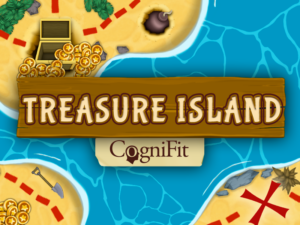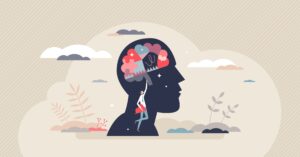
Nourishing the Mind: Fasting and Mindfulness for Brain Health
Introduction: Give Your Brain a Break
Fasting and mindfulness. Do we need it?
As any reader of a mindfulness blog already knows, amidst the constant stream of information and the demands on our attention, our minds often yearn for moments of clarity, focus, and nourishment. In the pursuit of optimal well-being, the connection between mind, body, and spirit becomes a guiding principle, weaving together various practices that contribute to our cognitive and emotional resilience.
Welcome to “Nourishing the Mind: Fasting and Mindfulness for Brain Health.” In this exploration, we embark on a journey into the realms of fasting practices and mindfulness, uncovering their profound impact on the intricate workings of our brains and cognitive health.
This journey encompasses the spiritual richness of the Daniel Fast, the contemplative traditions of Buddhism, and the practicality of intermittent fasting, all converging in a unique symbiosis that holds the promise of enhancing our cognitive vitality.

As we weigh anchor and navigate this exploration, we invite you to consider the profound interplay between what we choose to consume, both in terms of sustenance and mindfulness, and the intricate dance of neuroplasticity within our brains. In the synergy of fasting and mindfulness, we discover not only a pathway to enhanced brain health but also a holistic approach to nourishing the very core of our being.
So let’s dive into the principles, practices, and practical applications of fasting and mindfulness, seeking a deeper understanding of how this special symbiosis can unlock doors to clarity, focus, and overall well-being.
Understanding Fasting and its Impact on Brain Health
Exploring the Daniel Fast
In our quest for a nourished mind, we begin a very ancient fasting technique. This one is actually from the book of Daniel in the Old Testament. It is believed to have been written between 605 BCE and 530 BCE, so to say that fasting is a modern concept would be inaccurate to say the least.
With the Daniel Fast—a practice embraced for both its spiritual significance and potential health benefits, one restricts the diet down to a bare minimum. In the story of Daniel itself, the protagonist is restricted to a diet of only vegetables for a period of three weeks. At the end of the three weeks, he was said to look “great” (paraphrasing a little).
This fast involves fostering a disciplined and intentional approach to nourishment linked with spirituality. Daniel wanted to distance himself from what he considered to be a fundamentally sinful, anti-ethical way of living.
A modern application of the Daniel fast would include the same dietary restrictions as long as you get the OK from your medical professional. Alongside the dietary control, there is a restriction upon modern entertainment. This probably means no social media, no television, no computer games, no gossip, no news, no junk reading and a serious limit on salt, sugar and fat. It might sound heavy but the person on the fast is at least taking their health seriously.

A Super De-Tox
People often talk about having a de-tox, and the Daniel fast is most certainly that. It is a detox from dopamine thanks to the entertainment limits, a detox from “vexing thoughts” thanks to the lack of news and social media. It also leaves the practitioner with a lot of time of their hands. We shall discuss what to do with this time later.
The Buddhist Approach to Fasting (Uposatha Days)
Embarking on a journey eastward, we encounter the Buddhist approach to fasting, particularly through Uposatha Days. In the heart of Buddhist traditions, these observance days intertwine fasting with mindfulness, creating a tapestry of contemplative practices aimed at purifying the mind and body.
This has a lot in common with the Daniel fast as you will see: It is a removal of the self from the modern world in an act of ethical purification, a removal of silly distractions, a commitment to simplicity and refraining from certain worldly activities, such as entertainment, excessive socializing, and indulging in sensory pleasures.
Both of these practices are traditionally communal. One might choose to do it by oneself but both belief systems hold that strength and unity is acquired by fasting in a community.

Intermittent Fasting: A 21st Century Approach.
Intermittent fasting is an eating pattern that cycles between periods of eating and fasting. Here’s a brief description of how to do intermittent fasting, along with some common methods:
1. Choose a Fasting Window:
- Decide on the duration of your fasting and eating windows. Common methods include the 16/8 method, where you fast for 16 hours and eat during an 8-hour window, and the 5:2 method, where you eat normally for five days and restrict calorie intake on two non-consecutive days.
2. Select Your Fasting Hours:
- During the fasting window, abstain from consuming calories. This includes food and beverages with calories, such as coffee with added sugar or milk.
3. Stay Hydrated:
- Drink plenty of water, herbal tea, or black coffee during the fasting period to stay hydrated.

4. Plan Balanced Meals:
- Focus on nutrient-dense meals during the eating window. Include a balance of proteins, healthy fats, and carbohydrates to meet your nutritional needs.
5. Listen to Your Body:
- Pay attention to hunger and fullness cues. It’s essential to eat satisfying meals during the eating window to prevent excessive hunger during the fasting period.
6. Be Consistent:
- Choose a fasting schedule that aligns with your lifestyle and preferences. Consistency is key for adapting to intermittent fasting over time.
It’s important to note that intermittent fasting may not be suitable for everyone, and consulting with a healthcare professional is recommended, especially for those with pre-existing health conditions.
Mindfulness Practices and Their Role
Mindfulness Meditation
As mentioned previously, fasting gives you a lot of time, and the question is bound to arise of what to do with this time. True, you could tidy the house up, write your first novel or take up gardening, but both the Buddhist and Christian advice would be to turn to meditation.
Different types of meditation.
Of course the Christians and the Buddhist have virtually opposite ideas as to what meditation is. There is nothing to stop you from exploring both. We can talk about both and then discuss a secular approach.
Contemplation
The Christians and Buddhists both do this. The Christian would take a passage from the Bible and the Buddhist would attend a Dharma talk. The point is to absorb the depths of the wisdom you are studying.
Every sentence on the page or from the mouth of the master is to be savoured, pictured and understood. Let your thoughts be activated and stimulated and do not allow your mind to wander into trivialities.
When fasting includes all things and not just food, the lack of input also means a lack of distraction and interruption. Your mind will have the required peace to study and learn.

Secular Contemplation
Instead of a religious text, why not read a line or two from a great philosopher or poet; one might choose the stoics, the enlightenment, the great German philosophers or even literary giants such as Shakespeare and Charles Dickens.
The point is to choose a work of huge depth that will nourish your mind. The lines serve as a focal point upon which to fix the mind. It takes, and thus develops, great discipline of focus to to this.
Mindfulness Meditation
This has a closer connection to the Buddhist tradition than to the Christian. One simply sits in silence and observes the content of ones mind. This is notoriously tricky and so a guided meditation is highly recommended should you want to give it a try.
Mindful Living
Now, this is common to both the Christian and the Buddhist practices. This means following a strict code of conduct: never lying, never lusting, and never hunkering after material possessions. Once more, when fasting, one learns that very little is needed to be happy.
When self-excluded from all modern comforts, the realisation soon comes that those things were never really necessary at all. This requires a constant vigilance, or to put it another way… a state of mindfulness.

Mindful Eating during Fasting
Our journey takes a mindful turn towards the nourishment of the body and mind through the practice of mindful eating. We give ourselves the discipline of taking utmost care of what we eat and when we eat it. We can never let our guard down and simply “go with the flow” as we so often do in every day life.
If someone offers you a coffee and a cookie, you say “No, thanks” and smile, no matter what you feel like. If hunger pangs a gnawing at you, you ignore them and get on with your day. In fact, get up and do some exercise.
When we do get to eat, we experience great pleasure from even the simplest of food. There is a mindful practice of eating bite by bite and “fully experiencing” every morsel. We find that this comes totally naturally after sixteen hours or more of eating nothing at all. For people hoping to reach the high pinnacles of health as a result of this fasting practice, the good news is that even eating a humble carrot after a fast can double the pleasure of a cake simply eaten habitually when not fasting.
In weaving together the threads of mindfulness meditation and mindful eating, we illuminate the role of intentional awareness in promoting cognitive wellness. These practices, when embraced in conjunction with fasting traditions, serve as catalysts for heightened mental acuity, emotional resilience, and a harmonious relationship between mind and body.
Part 4: The Symbiosis of Fasting and Mindfulness
Neuroplasticity and the power of Fasting
Fasting has been associated with weight loss and several mechanisms that may contribute to improved brain health. While more research is needed to fully understand the long-term effects, here are some ways in which fasting may stimulate brain health:
- Brain Growth: Fasting has been linked to increased levels of brain-derived neurotrophic factor (BDNF), a protein that supports the growth and maintenance of neurons. Higher levels of BDNF are associated with enhanced neuroplasticity, the brain’s ability to reorganize and form new neural connections.
- Autophagy: Fasting triggers a process called autophagy, where cells remove damaged components and recycle them. This cellular “clean-up” process may help eliminate dysfunctional cells and debris, potentially supporting brain health.
- Mitochondrial Function: Fasting may enhance mitochondrial function, which is crucial for energy production in cells, including neurons. Improved mitochondrial function is associated with better overall cellular health, including in the brain.
- Reduced Inflammation: Chronic inflammation has been linked to various neurological disorders. Fasting may help reduce inflammation by limiting the intake of inflammatory substances and promoting the production of anti-inflammatory molecules.
- Improved Insulin Sensitivity: Fasting can improve insulin sensitivity, reducing the risk of insulin resistance and type 2 diabetes. Insulin resistance has been associated with cognitive decline and an increased risk of neurodegenerative diseases.
- Increased Brain-Derived Ketones: During fasting, the body produces ketones as an alternative energy source when glucose levels are low. Ketones have been suggested to provide neuroprotective benefits and may support brain function.
- Enhanced Brain Function: Some studies suggest that intermittent fasting may improve cognitive function, including memory and attention. The increased release of neurotransmitters and the promotion of neurotrophic factors during fasting may contribute to these effects.
- Stress Resistance: Fasting may induce a mild stress response in the body, leading to the activation of cellular stress response pathways. This hormetic stress response is believed to enhance the resilience of cells, including neurons, to subsequent stressors.
Mixing it Up
Well, that IS interesting.
We already know that meditation enhances adaptability, increases attention, and positively affects brain structure. Regular practice, especially mindfulness meditation, can lead to structural changes like increased gray matter in areas related to memory and emotion. Additionally, meditation reduces stress, improves emotional regulation, and strengthens the brain’s ability to focus. In simpler terms, meditation supports a healthier and more resilient brain.
So does that mean that Meditation combined with fasting has a synergistic effect? Very likely, although studies are still to be done. Both disciplines are great for brain health, stress reduction and more. The potential of combining them is huge.
After all, Christians have been doing it for at least two thousand years and Buddhist for about seven thousand years. Done sensibly, you could boost your health and your well-being like never before. So get some professional advice on how to fast safely and get meditating. Get some friends to do it with you and use a powerful meditation app that you all use. Encourage one-another and you will find success.
Brendan Carl Clarke













